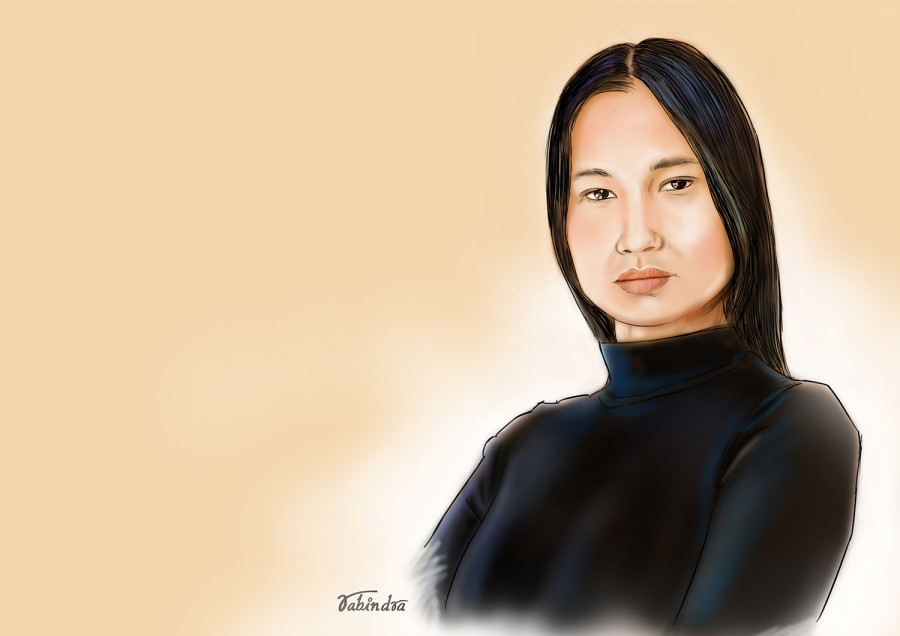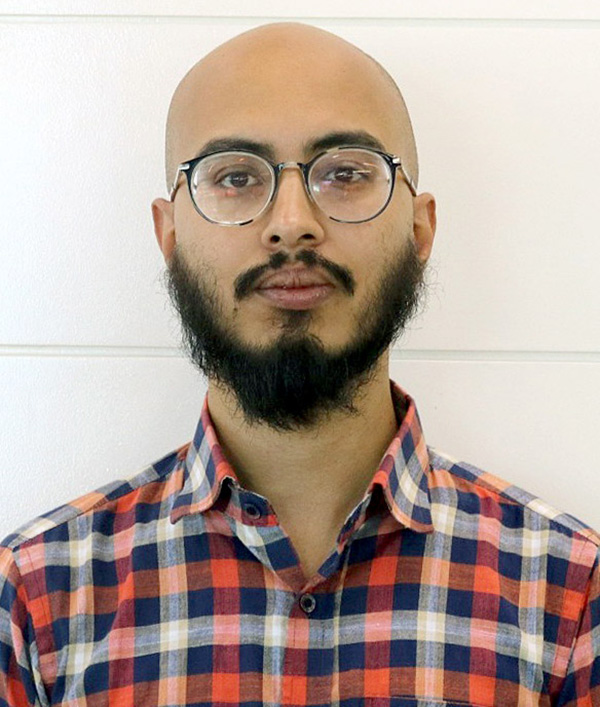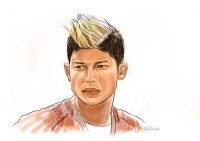Brunch with the Post
Varsha Thapa: You have to let people know where you stand in your own eyes
The New York-based model talks about her arduous modelling journey, her work with Prabal Gurung and following her passion.
Pranaya SJB Rana
Varsha Thapa sits in the courtyard of the Maya Manor Boutique Hotel in Hattisar, her legs crossed. I am late and she has been waiting. When she gets up to say hello, she towers over me, long-limbed and lithe. At 5 feet 10 inches, with long flowing hair, she is striking. No wonder then that she is perhaps the most internationally successful Nepali model yet.
She started her career in 2011 and in just nine years, Thapa has established the kind of resume that most models only dream about. She’s done Paris Fashion Week, Milan Fashion Week, Lakme Fashion Week; she’s been featured in Vogue, Cosmopolitan, Elle, Harper’s Bazaar; and her clients include Dolce & Gabbana, Nike, Hermes, Ralph Lauren, Bottega Veneta, Mugler and of course, Prabal Gurung.
Despite her stature and her sculpted cheekbones, Thapa is disarmingly charming. Sitting in the warm winter sun in an unexpectedly beautiful courtyard shielded on all sides by tall buildings, we talk more about her woes and struggles than her successes.
“I work almost 11 months a year and this is a time for me to relax and spend time with family,” she says, when I ask her what she is doing in Nepal. “I believe Nepal has this very maternal, loving energy. New York, London, Milan or Paris all have a very paternal energy, which is all about business and money. Nepal keeps me grounded.”
Thapa was born and raised in Nepal but she went to school in India, which is where she realised she wanted to become a model. But the qualities that make a model were also the qualities that got her bullied in school.
“I was bullied for being different and for being the tallest kid in class,” she says. “I intimidated all the guys.”
It was while watching tall models strut down the runway that Thapa felt like she’d found her tribe.
“Those models looked free and liberated,” she says. “They had barely any clothes on but they were being celebrated for who they were. I saw myself in them. I’m tall, I’m skinny, I’m beautiful. I didn’t think I lacked anything.”
But modelling was not a career choice for someone from Nepal. It was a hobby, not a profession. So she chose to do hotel management, following the plans that her mother had set out for her.
“Halfway through college, I realised that I didn’t want to work in the service industry,” she says. “It was very tough for me to quit because my mom had to work a lot of jobs and work hard to put me through school.”
Her mother gradually came around and she began applying to modelling agencies across the world. She didn’t hear back for months but eventually, she got her big break—with Wilhelmina Models in New York. After a Skype interview, they told her that they’d like to sign her and so, with a contract in hand, Thapa applied for a visa and landed in New York.
From then on, it must’ve been the high life. So I ask her what it was like, jet setting around the world, wearing the world’s most fashionable clothes, hobnobbing with celebrities. But what she tells me exposes the dark underbelly of that seemingly glamourous world.
“I was a new face and the agencies in New York are very, very clever,” she says. “There’s an apartment for models, which is two rooms with two bunk beds each and four girls in each room. Each girl was paying $1800 for rent and $200 for WiFi. And they would charge us for everything.”
As a newbie, Thapa needed headshots and photos so the agency would send her out to photographers and then bill her account. She needed comp cards, which are basically business cards for models to hand out to people, and they’d charge her for those too. Whenever she got a job, her paycheck would go towards paying off that debt. By the end of her third year in New York, she had accumulated $30,000 in debt.
“I didn’t know what to do,” she says. “I couldn’t even tell my mother because I had told her that this is what I want to do.”
She decided to move out from the model’s apartment and find a cheaper place. And she started working side jobs in retail. She worked in stores folding clothes and also worked as a greeter for Abercrombie and Fitch, where she stood at the door in a bikini and welcomed people. All the while, she was doing her modelling jobs too.
“I was doing New York Fashion Week and Paris Fashion Week but the whole time I was broke and I still had to show everyone that I was okay,” she says. “I had to look good and I had to maintain my body. It was very hard.”
In order to get a decent meal, she would go out with club promoters, who would take models out for dinner and in return, they’d have to go to their club and dance for a few hours for the club’s publicity.
“I did it because I didn’t have any other way to have a good dinner,” she says sheepishly.
But by the end of three years, she had paid off her debt and had $10,000 in cash. She was finally free and could do what she wanted to. She switched agencies multiple times and is now with the Lions, a small modelling agency that gives her more freedom to do the kinds of jobs she wants.
“It’s very stressful, I travel almost every week,” she says. “Once I got to the point where whenever I sat on a plane, my whole body would vibrate and my left arm would shake. My work was starting to affect my body and my mental health.”
I believe that I am not alone in imagining an enviable world with beautiful women and lots of champagne. What Thapa tells me pops that imaginary bubble.
“But looking back, I wouldn’t change anything because those times really gave me character,” she says. “It made me who I am today. It gave me understanding and maturity.”
For someone coming out of Nepal with no connections and no real links to the world of fashion, I don’t imagine it was easy to get jobs. Even more so since Thapa is very patently not white.
“There’s a lot of racism in the fashion industry,” she says. “Most jobs go to white girls and there’s maybe one or two slots for a black girl and an Asian girl. And even the Asian slot goes to an East Asian girl.”
Before she made it big, she was doing the leftover jobs that no one wanted to do. But a really big break for her came when Vogue India specifically asked for her. They wanted to do a cover with her and a few other girls from the region.
“They flew me to India and we shot that cover,” she says. “I met all the industry people and I stayed in India for a while, doing some of the best work. I did Lakme Fashion Week, shot for Vogue, Elle, Cosmopolitan, Harper’s Bazaar and walked for all the best designers.”
She enjoyed her time in India immensely, she says. Much more than her time in New York. But, as an international model, she needed to be in New York and so she went back. Now, she’s based out of New York but she travels all the time. All this time, there’s one thing that I really want to know—how did she and Prabal Gurung make such a pair?
“I had always wanted to meet Prabal so when I got to New York, I told Wilhelmina to connect me to Prabal and tell him that I am also Nepali,” she tells me. “He couldn’t believe that there was a girl from Nepal who is 5’10”. But we met and we spoke and I told him it would be my dream to walk his show. He wasn’t sure at first because I was so new. But eventually, he put me in his show.”
She first walked for Gurung in 2012 and since then, they’ve collaborated multiple times. They’re an iconic Nepali pair in New York: the star designer and his fabulous model.
“It was great to meet another Nepali person in the industry, especially so early in my career,” says Thapa. “We also got along so well because we’re big, big Bollywood fans. He’s a really good person and he’s very inspiring. I look up to him and everything he’s done for Nepal.”
Thapa is very proud of being from Nepal and she makes sure to showcase her Nepali roots wherever she goes. It’s the same with Gurung.
“Whoever we work with or wherever we work, it’s not just us, Nepal is coming with us. We’re representing Nepal,” says Thapa.
Thapa has conquered the modelling world so I ask her what’s next. Music, she tells me.
“I formed my band, Sita Virgin, in 2018 and we’ve done a bunch of shows,” she says. “I really want to break into the music market next. Modelling has been a stepping stone, but music is what I’m passionate about.”
Thapa is currently working on her single, Maya, with Diwas Gurung, the man behind Bartika Eam Rai’s first album.
It is clear from Thapa’s demeanour that she is not troubled by too many things. She is carefree and bright, and very adept at making one feel at ease. Is this an outcome of her many years of struggling to make it in New York, I wonder.
“If you communicate your value to people, they will reciprocate it,” she says. “You have to let people know where you stand in your own eyes.”
ON THE MENU
MAYA MANOR BOUTIQUE HOTEL, NAXAL
Korean rice bowl: Rs 514
Chinese rice bowl: Rs 498
Maya manor salad: Rs 551
Seasonal fresh juice X3: Rs 750




 18.37°C Kathmandu
18.37°C Kathmandu



.jpg&w=200&height=120)






